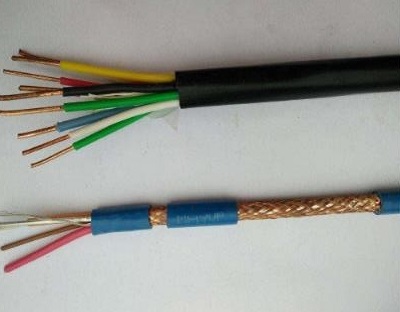



I cavi armati utilizzano nastro di acciaio o nastro di alluminio per rafforzare le proprietà meccaniche del cavo in modo che il cavo possa resistere alla pressione meccanica esterna. Il cavo schermato è schermato con nastro di rame o filo di rame intrecciato per isolare le interferenze del campo elettromagnetico.
Cavo rivestito in metallo e cavi dell'armatura sono tra i cavi più confusi sul mercato. Il motivo è quello in termini di costruzione, questi cavi sono più o meno simili ed entrambi hanno un'armatura. La differenza principale tra i due cavi è in realtà legata alla messa a terra, non un'armatura. Prima di concentrarci su questa piccola differenza, approfondiamo il ruolo dell'armatura nei cavi armati.


L'armatura è in metallo nel cavo armato, come l'acciaio, rame, o alluminio. Lo scopo dell'armatura è fornire protezione fisica del cavo dall'ambiente. Protegge principalmente il cavo di alimentazione da danni fisici. Perciò, i cavi armati vengono utilizzati solo in ambienti in cui meccanico potrebbero verificarsi danni.
Dal punto di vista del budget, il vantaggio principale dei cavi CC e CA rispetto ai cavi per uso generale senza armatura è il risparmio sui costi delle tubazioni. Poiché l'armatura fornisce la protezione che i condotti avrebbero fornito, non è necessario spendere soldi extra per questo.
Mentre online esiste un certo livello di disinformazione sull’argomento, i cavi armati non proteggono i cavi dalle intemperie, sostanze chimiche, e acqua. Infatti, i fili armati sono soggetti a corrosione. Se si desidera utilizzare un cavo armato in ambienti umidi, avrai bisogno di un cavo con una guaina extra in PVC, appositamente installato per luoghi umidi.
La differenza principale tra i cavi CA e CC è che i cavi rivestiti in metallo hanno un filo di terra standard, mentre i cavi CA si affidano a una guaina combinata con un filo o una striscia per garantire la messa a terra. L'armatura metallica può essere utilizzata anche con fili di collegamento come parte del terreno terrestre. Nei cavi di tipo DC, l'armatura non fa parte del terreno.
Un'altra differenza tra i cavi CC e CA è che i cavi CA vengono utilizzati all'interno e non sono adatti a luoghi bagnati e umidi. Il motivo è che il cavo CA non ha una guaina in PVC. Si tratta di una guaina in PVC che rende il cavo DC adatto per ambienti esterni. A differenza della DC, I cavi CA non sono adatti per l'interramento diretto.
Molto prima dell’introduzione della DC, I cavi CA erano il tipo di cavo armato predominante sul mercato. Sono apparsi già nel Codice elettrico nazionale NEC 1903. Oggi, Tuttavia, I cavi DC sono un'alternativa più versatile e moderna.
Se hai bisogno di cavi armati in interni, I cavi CA possono soddisfare le tue esigenze. A VERI Cable, puoi ottenere tutti i tipi di cavi CA e CC di qualità senza precedenti ai migliori prezzi del settore.
Cari partner e clienti: 29 gennaio, 2025 è il capodanno lunare cinese – Spring…
Il filo di rame è un componente fondamentale nel mondo dell’elettrotecnica e dell’elettronica, valued…
Annuncio A tutti i clienti e partner, Recentemente, there has been sufficient evidence that other…
In occasione del Capodanno 2025, ZMS Cable wishes every customer and partner a…
L’industria medica europea ha assistito a progressi significativi negli ultimi anni, driven by the integration…
Il successo del lancio di un razzo comporta una delle imprese ingegneristiche più complesse che si possano immaginare,…